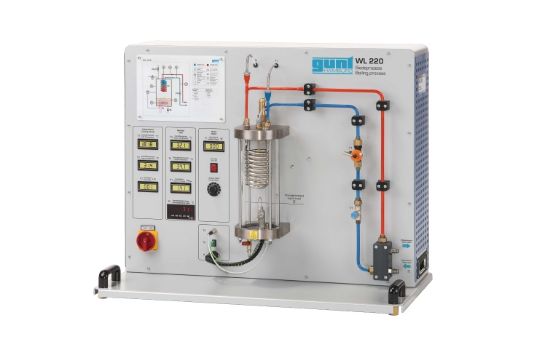The GUNT WL 220 Boiling and Evaporation Experimental Unit is designed for the detailed study of boiling and evaporation processes in heat transfer. This advanced laboratory unit enables clear observation and measurement of free convection, nucleate boiling, and film boiling, making it an essential tool for thermodynamics and heat transfer education. Built with high-quality materials and precision instrumentation, the WL 220 allows safe, repeatable experiments for research and teaching purposes.
Product Features
- Application: Study of boiling and evaporation in heat transfer
- Demonstrates: Free convection, nucleate boiling, and film boiling
- Integrated sensors for temperature and heat flux measurement
- Durable and safe design for repeated laboratory use
- Ideal for universities, research centers, and engineering training
Benefits
- Provides a hands-on demonstration of phase change heat transfer
- Allows detailed analysis of boiling regimes under controlled conditions
- Supports teaching of thermodynamics, energy systems, and process engineering
- Delivers accurate, repeatable results with integrated instrumentation
- Durable construction ensures long-term academic and industrial use
Why Choose the GUNT WL 220?
The GUNT WL 220 Boiling and Evaporation Experimental Unit offers a comprehensive platform for studying heat transfer through boiling. With the ability to demonstrate free convection, nucleate, and film boiling, it provides students and researchers with valuable insights into real-world thermal processes.

